Bed Bug Removal Services
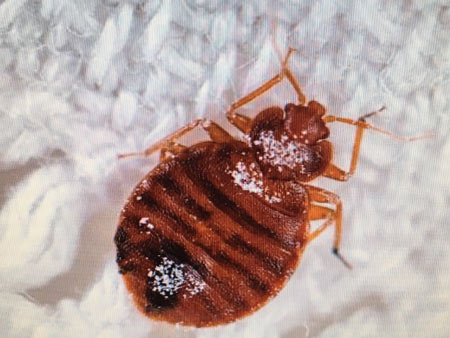
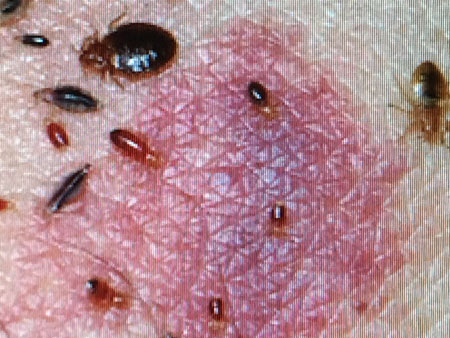
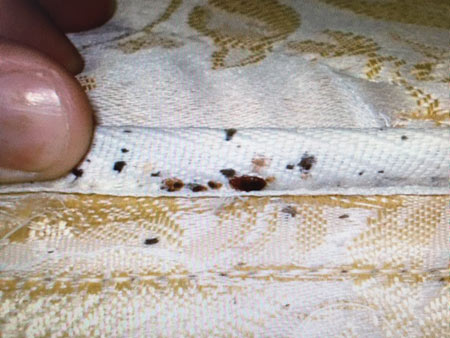
Experts at Bed Bug Control
Suffolk Pest Control has years of experience treating and controlling bed bugs. We've serviced hundreds of households and businesses including local hotels, apartments and hospitals for bed bug infestations and control.
When it comes to bed bugs, there are steps that must be followed to ensure the best possible treatment.
Download this helpful PDF Bed Bug Checklist with bed bug information and a treatment checklist.
Our Service Area
 Suffolk Pest Control offers bed bug treatment and control services to the following South Hampton Roads, Virginia communities:
Suffolk Pest Control offers bed bug treatment and control services to the following South Hampton Roads, Virginia communities:
Suffolk, Chesapeake, Portsmouth, Smithfield, Carrollton, Rescue, Windsor, Waverly, Franklin, Ebron, Boykins, Newsoms and surrounding areas.
Bed Bug Treatment Guarantee
It can be hard to determine if a bed bug infestation has been fully eradicated after treatment. Due to the nature of re-infestations that can occur for those that travel frequently, or those who have frequent guests who may be a source of the infestation, Suffolk Pest Control does not offer a warranty for bed bug infestations.
Online After Business Hours?
Suffolk Pest Control is open Mon-Fri 9AM to 5PM. Call 757-934-2223 If you think you may have a bed bug infestation. If you're browsing this page after hours, complete the form below to have a customer representative contact you the next business day.
What Are Bed Bugs?
The common adult bed bug (Cimex lectularius) has been a scourge to humans throughout history. Thought to be eradicated during the 1940's and '50's, they have made a worldwide resurgence particularly in the US over the last decade. They can be found in every US State and more commonly within large cities to the point the US Federal Governement has labeled it an "epidemic".
Bed Bugs are a blood-feeding insect averaging 3/16” long and reddish-brown, with oval-shaped, flattened bodies. Their sole mode of moving about is by rapidly crawling and have no means to jump or fly.
Adult bed bugs lay 1 to 2 eggs daily and can potentially generate hundreds of offspring over their lifetime. Eggs hatch in approximately a week and are no larger than a pinhead. Bed bugs mature in as little as a month in ideal temperatures af between 70 and 80 F. As they grow, beg bugs molt their skins five times over their life.
Bed bugs require blood in order to produce eggs. However, they are extremely resilient surviving over a year in cooler temperatures without a source of food. Thus, starving an infestation out is usually not a good option to eradicating them.
Active mainly at night, bed bugs prefer to stay close to their food source - thus their name. Most infestations can be found on bed mattresses and their linings. They can also be found in cracks in the wood of a bed frame and/or headboard.
Why Have Bed Bugs Become a Problem?
The problem of bed bugs was nearly eradicated with the advent of DDT after WWII. However, bed bugs have become a serious problem in the US for the following reasons:
- An Increase in International & Domestic Travel
- A Large Immigration Population Increase in the US
- A Reduction in Residual Insecticides in Dwellings
- They Are Hard to Find and Inspect
- Ineffective Treatments
How Do Bed Bug Infestations Occur?
With the explosion of the bed bug problem in the US over the last decade, it's becoming more common for households to find themselves a victim - especially if you frequently travel.
Bed bugs are easily spread simply by being around many public access places such as hotels, hospitals, movie theaters, buses, trains and planes. They are easily transported after crawling into luggage, bags and clothing and unnoticeable because of their size.
Another household source of an infestation is from host animals such as bats, birds or squirrels that get into chimneys or attics. When a one blood host is gone - it looks for another. Once inside a home - humans become its next target as they search and congregate near the host.
Identifying a Bed Bug Problem
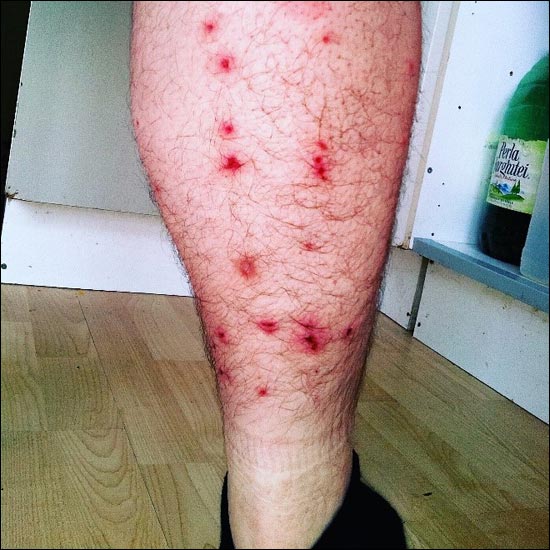
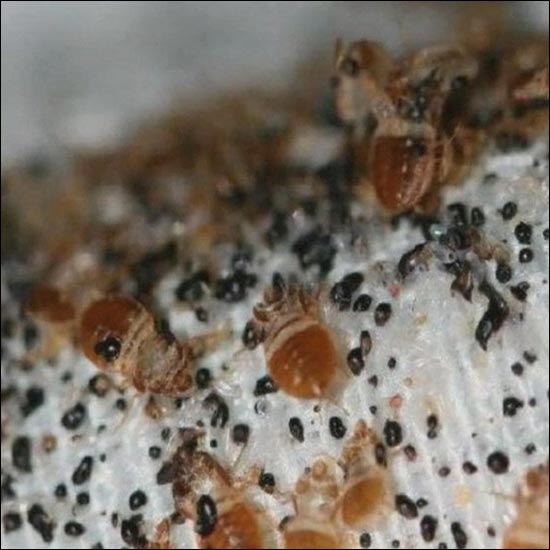
A problem typically arises when someone in your household or office starts experiencing unexplained small painful, itchy red welts anywhere on their body. Bed bugs feed for approximately 10 minutes and immediately go back to where they came from. Many times, the bite does not show any reaction or can appear days after a bite.
If you notice bites on your skin that were not there the night before, perform a thorough inspection of your mattress and bed structure, clothing and luggage for signs of an infestation.
- Tufts, Seams & Buttons on Mattresses
- Inside and Under Box Springs, Bed Frames & Covers
- Couches & Chairs
- Windows & Door Moulding
- Cracks in Hardwood Flooring
- Under Carpet Along Walls
- Wall Voids Behind Switch Plates & Outlets
- Luggage, Backpacks & Clothing
How Suffolk Pest Control Treats For Bed Bugs

Suffolk Pest Control treats bed bugs using a combination treatment of steam and chemicals to kill the adult bed bugs and the eggs. This combination treatment is effective and less costly than most other treatment options. Heavily infested rooms may require more than one treatment depending on the size of the infestation.
Preparing For a Bed Bug Treatment
- Remove all clothes, boxes, toys, etc... From all floors in rooms that are being treated. Empty everything from dresser drawers and night stands and any other furniture. Store items in a room that is not being treated. Leave only furniture, bed and pictures in rooms.
- Wash all clothing, towels, and linens in hot water and dry in hot dryer place the clean items inside plastic bins or plastic garbage bags. Store them in a room that is not being treated.
- Disassemble all beds. Remove all sheets,blankets, mattress covers, pillow cases etc... Wash in hot water and dry in hot dryer. Do not put them back on beds until treatments are complete.
- Remove everything from closets. Closets must be empty.
- Vacuum floors & inside closets. Vacuum inside furniture, drawers nightstands etc... Vacuum mattress & box springs. After vacuuming thoroughly, remove the vacuum bag and place it in a garbage bag, tie off & seal securely as the bed bugs can crawl out of the bag and re-infest the house.
- Move furniture away from walls 2-3 foot to allow for inspections and treatments.
- Pull carpet edges away from walls: Being careful, take a pair of pliers and gently grab the corners of the carpet and pull 1 foot away from walls. This should be done one wall at a time during treatments.
- Remove all switch plate & electrical outlet covers. Place in plastic zip lock bags along with screws. Label bags so you will know where to place them back when treatment is complete.
- Your preparation for this treatment is just as important as the treatment. Please follow the instructions and be ready for your scheduled treatment appointment.
- IMPORTANT- Everything must be put into garbage bags, plastic containers or ziplock bags securely tied, sealed, locked or zipped prior to being removed from the infested room. If not, you may be transferring bugs and or eggs to other untreated rooms. Do not remove any furniture, mattress, box springs, rugs, pictures or lamps. These items typically contain bed bugs and eggs that will hatch and spread the infestation to other parts of the house.
Bed Bug Treatment Options
Bed Bug Vacuuming
Vacuuming your carpeting and furniture seldom resolves a bed bug problem. Although it may be somewhat effective in removing adult bed bugs, the eggs are sticky and resistant to vacuuming.
They can also survive the vacuuming process so throwing the vacuum bag out afterwards would be recommended. After vacuuming thoroughly, remove the vacuum bag and place it in a garbage bag, tie off & seal securely as the bed bugs can crawl out of the bag and re-infest the house.
Heat Treatment Bed Bug Treatment
This treatment is highly effective in killing the adult bed bugs and the eggs. Heat treatments are successful in 98% of the treatments performed. The down side to the heat treatments outweigh the upside for this company. A single heat treatment requires two licensed technicians four to six hours to prep the location, set up the heater and monitor the treatment. The two technicians must monitor the entire treatment from beginning to end. The cost can range from $3,000-$6,000. The liability factor must be acknowledged by the treating company and the homeowner. A damage waiver is typically required by the treating company. The high prolonged temperatures can cause damage to composite wood furniture, vinyl windows, vinyl flooring, wood flooring, and plastics. Some types of glue and adhesives used in flooring, baseboards, doors and trim can melt during the heat treatment process releasing harmful toxins into the air. Toxins can cause severe respiratory complications which could result in hospitalizations.
Bed Bug Insecticides
Insecticide treatments specifically formulated for treating bed bugs are the best option for long-term prevention of a re-infestation. This is especially true for those who travel frequently. Again, for a thorough immediate and long-term bed bug prevention treatment, many pest control companies employ both steam treatment and insecticides, at the same time.
Steam Treatment for Bed Bugs
Steam treatments are very effective in killing adult bed bugs and their eggs. A quick burst of hot steam will cause bed bugs to come out of cracks and crevices where they live and breed. Once they come out of hiding, they are easier to hit with the steam. The steam can be used on all surfaces. Steaming the carpet, furniture, bedding, and mattresses is a very effective method of treatment.
SPC uses a combination of steam and chemical to treat and control bed bugs. This combination is safe to use on all surfaces without causing damage to property and furnishings. The cost is 75% less than heat treatments, and the time factor is also much less.
